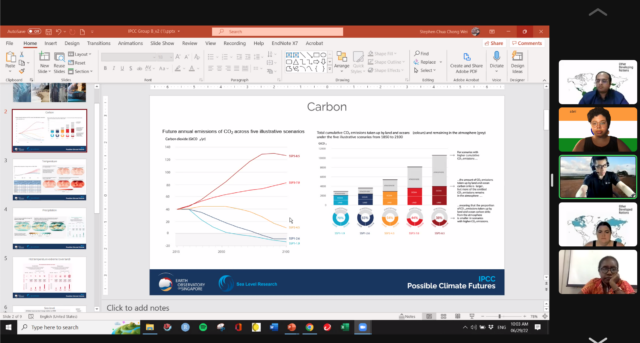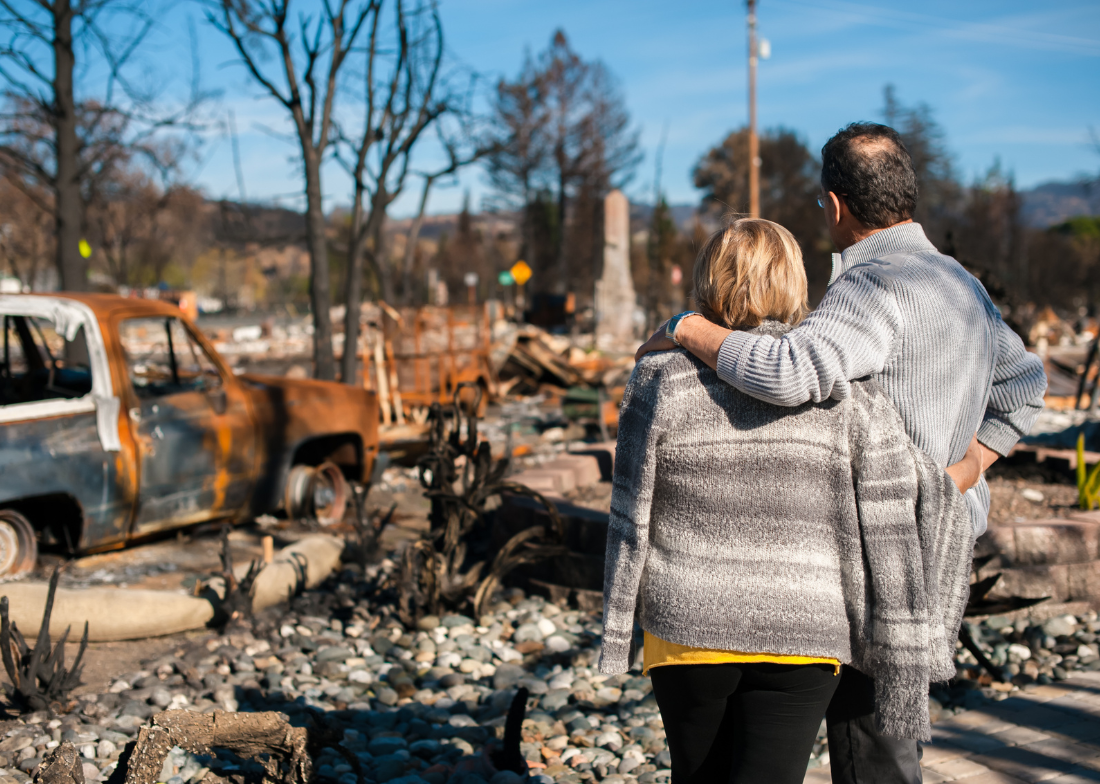APRU Student Global Climate Change Simulation
Victoria Whalen, ACE Fellow
|September 13, 2022

This summer, I had the opportunity to participate as a University of Oregon delegate at the 2022 APRU Student Global Climate Change Simulation. This was an exciting 3-day event simulating global relations and negations that would occur at the United Nations.
What is APRU?
APRU, also known as the Association of Pacific Rim Universities, is a network of 60 universities in the Americas, Asia, and Australasia region that collaborate to create practical solutions for public policy questions in the modern age. Founded in 1997 by the presidents of CalTech, UC Berkeley, UCLA, and USC, the organization now prioritizes:
- Providing a neutral platform for heavy-level policy dialogue
- Taking action on climate change and,
- Supporting diversity, inclusion, and minorities
Currently, over 2 million student participants and over 200,000 faculty members and instructors are involved in the organization. APRU focuses its work on three branches: (1) Pacific Rim challenges, (2) University Leadership and (3) Student Leadership. Each branch has subcategories of work, including global health and biodiversity under the Pacific Rim challenges, indigenous knowledge working group, and virtual student exchange in university leadership and student leadership, respectively. The APRU Student Global Climate Change Simulation falls under their global health and sustainable cities & landscapes program.
APRU Student Global Climate Change Simulation
With the first simulation happening in 2021, APRU describes its climate change simulation as a role playing exercise where students form multi-country and multi-disciplinary teams to play the role of UN Climate Change delegates. The simulation was held over three sessions which met every other week online, each with a different lecture topic, followed by a meeting with your delegation, and then the negotiation session. Listed below are a few of the learning objectives for the simulation:
- Describe what contributes to climate change, and its impact on planetary health
- Explain global climate change efforts, such as the Paris Agreement, the United Nations Framework Convention on Climate Change (UNFCCC), and the Conference of Parties (COP)
- Discuss the complexity involved in countries’ decisions, including consideration of factors such as economic impact and negotiating power
- Explain how/why climate change affects the most vulnerable populations and why it is an issue of social justice
This year, over 170 students worldwide participated, meaning three different simulations (orange, blue, and green) were happening simultaneously. In each simulation, students were split into six delegations: USA, China, European Union, India, Other Developed Nations, and Other Developing Nations. So, for example, I was placed in the orange simulation within the India delegation and had eight other teammates hailing from all over, including California, Japan, China, and Fiji!
Opening Ceremony
Before the brunt of the simulation starts, APRU puts on an opening ceremony where keynote speakers and global partners shed light on the importance of international negotiations when tackling such an overarching issue as climate change. Besides the program directors from the various participating universities, this year highlighted speakers from the United Nations Habitat Regional Office for Asia and the Pacific, the Sustainable Sourcing department of Adidas, and the lead author on the human health chapter of the latest Intergovernmental Panel on Climate Change (IPCC). After listening to each speaker, the remainder of the opening ceremony was dedicated to learning how to participate in the simulation. First, we learned how to fill out our pledge worksheet and how to use Climate Interactive’s World Climate Simulation. Afterward, we split off into breakout rooms of our nation delegation for quick introductions, role assignments, and the best means for communication.

Day One
Before the first official negotiation session began, each delegation was tasked with completing some individual and group homework as preparation for the day. This ‘homework’ involved reading up on your country or nation’s position, submitting your pledge worksheet, and preparing a brief 2.5-minute speech on your delegation’s position. The simulation then opened with more keynote speakers. This time, we listened to Dr. Rhys Jones (Ngāti Kahungunu), the Public Health Physician and Senior Lecturer at the University of Auckland, and Dr. Ralph Chami, the Assistant Director and Chief of Financial Policies at the International Monetary Fund. Their talks focused on indigenous perspectives on climate change, global health, and how to fund the climate crisis.
Afterward, we were split into our different simulation rooms and began giving our opening position speeches. I was lucky to be chosen as my delegation speaker and gave a speech on India’s goals for this UN meeting. After taking a few notes on each delegation, we are able to see the effects of our initial pledges. The purpose of the simulation is to get below 2℃ based on all the international pledges unanimously. On day one, we started at a global temperature of 3.6℃, and afterward, we managed to lower the temperature to 2.4℃.
The last hour consisted of meeting privately with your delegation and expert facilitator to discuss the best strategies when negotiating with other nations. Then you’re free to enter different nations or country’s breakout rooms to discuss your terms and conditions. This part was the most exciting and engaging because you are essentially trying to win over the delegation to agree with your demands and goals, all while simultaneously having to deal with other nations’ demands and goals. As a delegate from a nation whose primary goal is ending poverty and getting monetary help, it was a mad dash going to the developed countries such as the USA and the EU to ask for help. Finally, to end the day, we all met back up with our supervisors and had a quick wrap-up session to prepare for day two.

Day Two
Day two jumped right into the second round of pledges and discussed the implications of our global temperatures. This time, while we only made a slight difference compared to the last session, we managed to get the global temperature down to 2.1℃. Even though we were close to the goal, each nation had to work to get below two degrees. To help, delegates were split into breakout rooms with special topics discussed by experts. These topics included: clean tech energy, trading and offsets, oceans, and lastly, forests and biodiversity.
The next stage of day two involved quickly regrouping with your delegation and setting up your final pledge. This is the last time that we were able to get together and reflect as a group before heading into the final pledge round. This final pledge round was full of excitement and suspense as the coordinator put each pledge into the system. Through our negotiations, as a group, we were able to get the global temperature down to 1.9℃! Then, after a round of applause, we reflected on what it meant to get to this point and how the experience compares to the actual United Nations conferences.
My experience
Overall, I had a great experience participating in the simulation and would recommend it to other students interested in climate change, human rights, and global relations. A great part of the experience is the breadth of diversity. Students from all age groups and racial and socioeconomic backgrounds participated, and there was such a wide variety of schooling and knowledge, with many participants not having any background in climate change at all. Because of this, it felt like an immersive UN experience as you interacted and learned from people who experience climate change differently.

There weren’t any negatives to the simulation, but there is one caveat. To maximize the experience and have the best time possible, you must participate! There was a range of participation amongst the students, and it seemed that if you weren’t actively participating, it slowed down the experience for the rest of your group delegates and wasted time. Since the simulation only runs three times, you’re not gaining much if you don’t participate. Of course, participation doesn’t mean you need to answer every question the guest lecturer asks or be the point person for every negotiation. Still, it makes it more rewarding to see your thoughts and opinions expressed in the final negotiation efforts. For me, my participation meant assigning myself as the delegation member who gave an opening speech on India’s plans and goals, joining the negotiation sessions, and listening to what each delegation was demanding.
Whether you have a background in climate change or are just starting to learn about it, this simulation is an excellent opportunity to form international relationships, hone your public speaking skills, and learn about the intersections that fall under the climate crisis. As an added bonus, it looks great on your resume, and you even get a certificate upon completion. If you’re interested in participating next year, ask your university if they are members or visit Apru.org.
Want to read more? Check out the ACE Blog.
Join our Youth Action Network
More Blog Posts
Driving India towards self sufficiency and freedom from oil
India can shield itself from oil-price shocks and global pressure over Russian barrels by leaning harder into two strengths it …
Read More
Unnatural, Not Unprecedented
For two weeks, residents of Southern California endured a waking nightmare. Parents raced against time – hurrying down the driveway …
Read MoreCrafting a Vision for the Future: My Experience at LCOY USA 2024
Dry and sunny Tempe, Arizona where temperatures have been over 100 F for 113 consecutive days, delegates gathered to attend …
Read More